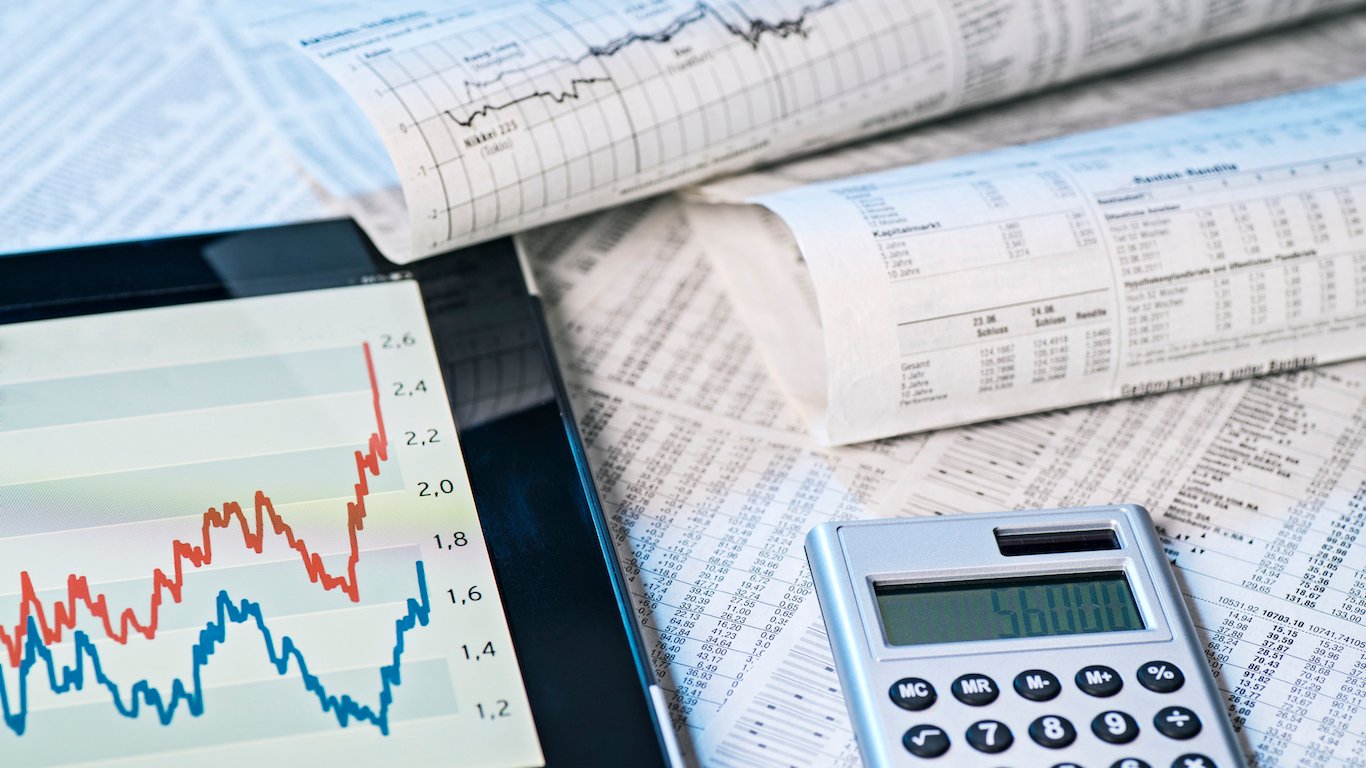Investing
13 Dirt Cheap Dividend Stocks Valued Under 10 Times Earnings

Published:
Last Updated:

It’s been hard filtering out the news from the noise in 2019. After the S&P 500 and Nasdaq Composite recently hit all-time highs and rallying about 20% on average since the end of 2018, suddenly more fears have crept into the financial markets and the economy now that the United States and China have traded retaliatory tariffs. And the global growth already was questionable before this trade war broke out. Now investors have to think long and hard about how they want their assets positioned ahead after a 10-year mega-bull market.
One area that investors frequently look to for safety is the so-called value stocks. These companies generally are valued at substantial discounts to the market as a whole, or maybe they are just valued cheaper than their sector peers. Some are cheap based on their share price multiple against earnings, cash flow, EBITDA or even their book value.
One thing that is hard to argue is that a true value stock might not offer real “value” if the underlying company does not or cannot pay a dividend. It’s also hard to use the term “value” if a company’s earnings or core business may be at risk of drying up in a very short time.
24/7 Wall St. has screened the entire S&P 500 for dividend-paying stocks that are trading at less than 10 times expected earnings per share. That implies that the shares are valued at more than a 40% discount to the 17.5 times estimated S&P 500 EPS figure as a whole, as well as about two-thirds the value of a historic 15 times expected earnings during normal times.
Before thinking that value stocks are always “cheap stocks,” note that investors may not want to pay a market multiple for a struggling company for many reasons. Maybe there are operational issues, industry pressures, regulatory pressures, slow or negative growth, or other issues that keep the market from valuing these companies on par with the market itself.
24/7 Wall St. screened the entire S&P 500 for stocks valued less than 10 times expected current year earnings per share (EPS) using data from Refinitiv for estimates. Those were screened as normalized EPS used by Wall Street analysts rather than GAAP numbers, but we also have added some color to explain why each company is at a discount to the market or its peers. Companies with negative earnings or with major earnings contractions that would threaten their dividends ahead were screened out. Industries were screened peer-by-peer for which one represented the best value to focus on only one or two companies and to prevent excessive sector concentration.
It is important always to remember that there is no free lunch in the stock market. There is an entire history of value stocks turning into value traps. Some never manage to recover at all, while other companies do return to greatness.
Here are 13 dirt cheap value stocks that are valued at less than 10 times earnings and that also pay steady dividends deemed safe as of mid-2019.
American Airlines
> About 6.5 times expected earnings
American Airlines Group Inc. (NASDAQ: AAL) has been considered a value stock among the airline industry for some time, but the airlines have become more mainstream for investors and are believed to have fewer earnings shocks and major losses compared to pre-recession periods. Oil prices now more stable and not running back to those prior $100 per barrel levels keep jet fuel costs reasonable. Airlines also get to gouge on fees, and those affected by the 737 MAX plane groundings (American is one of them) have held up relatively well.
With shares near $32.50, the 6.5 times projected earnings figure is based on a consensus estimate of $5.01 per share for 2019. That would be up from $4.55 EPS a year earlier, and the 2020 consensus sees $5.69 EPS. The dividend yield is only about 1.25%.
AT&T
> 8.8 times current and expected earnings
AT&T Inc. (NYSE: T) would be the top yield in the Dogs of the Dow, but it’s no longer even ranked as a Dow Jones industrial average member. After paying billions to acquire DirecTV and then paying billions more to acquire Time Warner, some investors have a much harder time analyzing the value proposition when considering the mix of all the moving parts within AT&T now. That has led to a long slow bleed in the shares, and at $31.20 a share, the $227 billion market cap has to fight for attention, considering that AT&T’s long-term debt is almost $185 billion and the total liabilities are $353 billion. The stock also has lost about one-fourth of its value over the past three years while the overall market has risen.
With $3.52 EPS in 2018, analysts are calling for $3.58 in 2019 and $3.64 in 2020. That is very low growth, even with 7% revenue growth expectations in 2019. AT&T pays out about 60% of its EPS, and that is considered sustainable by most investor views. Its dividend yield is more than twice the Treasury’s long-bond at 6.5%.
Thank you for reading! Have some feedback for us?
Contact the 24/7 Wall St. editorial team.